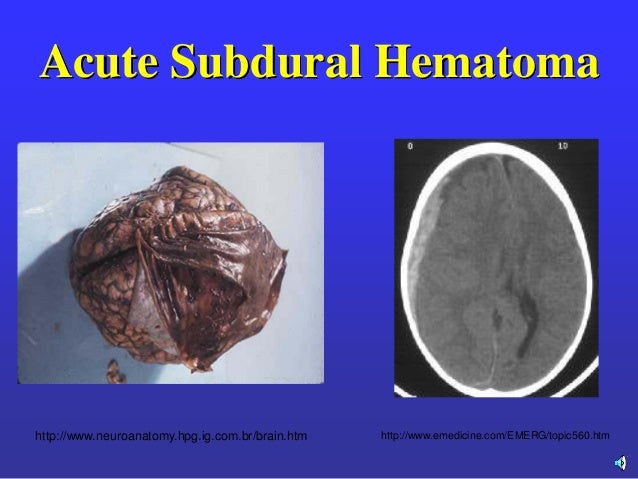

The difference in outcome between EDH and ASDH arises from two discrete but related etiologies. In patients with acute subdural haematoma, the mortality rate was 66.4% (95% CI 50.5% to 81.9%) with a favourable outcome seen in 6.6% (95% CI 1.8% to 14.1%).Ĭonclusions and implications of key findings Despite the poor overall prognosis of patients with closed head injury and bilateral fixed and dilated pupils, our findings suggest that a good recovery is possible if an aggressive surgical approach is taken in selected cases, particularly those with extradural haematoma.In contrast with a treatable epidural hematoma (EDH), an acute subdural hematoma (ASDH) carries a high risk of morbidity and mortality, even with timely decompression. In patients with extradural haematoma, the mortality rate was 29.7% (95% CI 14.7% to 47.2%) with a favourable outcome seen in 54.3% (95% CI 36.3% to 71.8%). Results Five cohort studies met the inclusion criteria, collectively reporting the outcome of 82 patients. Eligible studies were publications that featured patients with bilateral fixed and dilated pupils who underwent surgical evacuation of traumatic extra-axial haematoma, and reported on the rate of favourable outcome (Glasgow Outcome Score 4 or 5). The Cochrane Central Register of Controlled Trials and PubMed databases were searched to identify relevant publications. Methods A systematic review and meta-analysis was performed using random effects models. Primary objective To review the prognosis of patients with bilateral fixed and dilated pupils secondary to traumatic extradural (epidural) or subdural haematoma who undergo surgery. Prognosis of patients with bilateral fixed dilated pupils secondary to traumatic extradural or subdural haematoma who undergo surgery: a systematic review and meta-analysis.Įmerg Med J 2014 e-pub ahead of print Nov 11 :1–7 Scotter J, Hendrickson S, Marcus HJ, Wilson MH. “We believe that 54% of patients with extradural haematoma with BFDPs having a good outcome is an underappreciated prognosis, and the perceived poor prognosis of BFDPs (from all causes) has influenced decision making deeming surgery inappropriately futile in some cases.” The authors comment on the pessimism that accompanies these cases, which potentially denies patients opportunities for recovery: Only 6.6% of patients with SDH and BFDP had a good functional outcome.Ĭlearly there is potential for selection bias and publication bias, but these data certainly suggest an aggressive surgical approach is appropriate in some patients with BFDP. Here’s his paper that gives the figures – a systematic review and meta-analysis.Ī total of 82 patients with BFDP who underwent surgical evacuation of either subdural or extradural haematoma were identified from five studies – 57 with subdural (SDH) and 25 with extradural haematomas (EDH). Neurosurgeon, HEMS doctor, and all round good egg Mark Wilson was on the RAGE podcast recently and mentioned favourable outcomes from neurosurgery in patients with extradural (=epidural) haematomas who present with bilateral fixed dilated pupils (BFDP). Almost two-thirds of patients with extradural haematoma and bilateral fixed dilated pupils survived after surgery, with over half having a good outcome


 0 kommentar(er)
0 kommentar(er)
